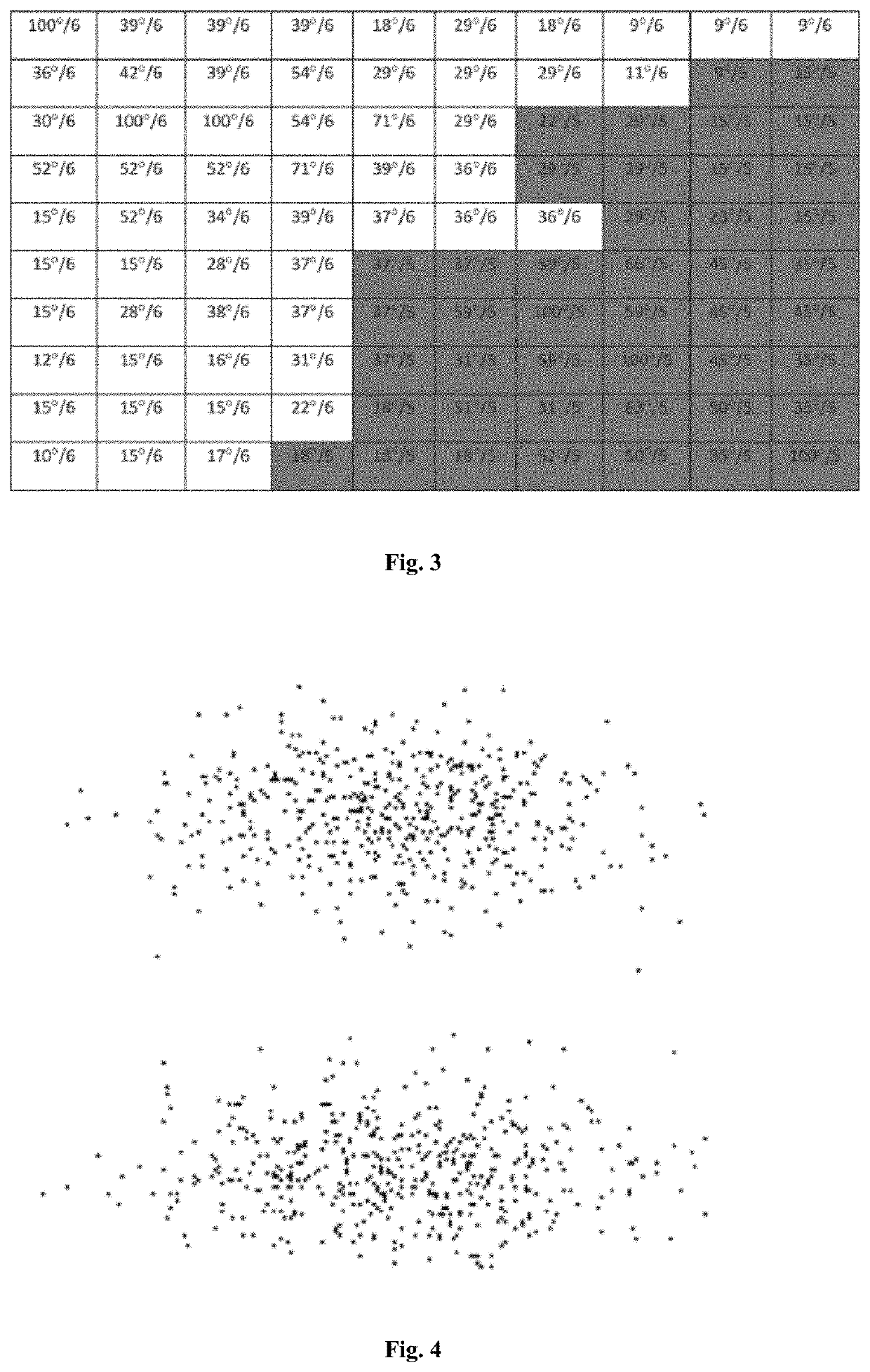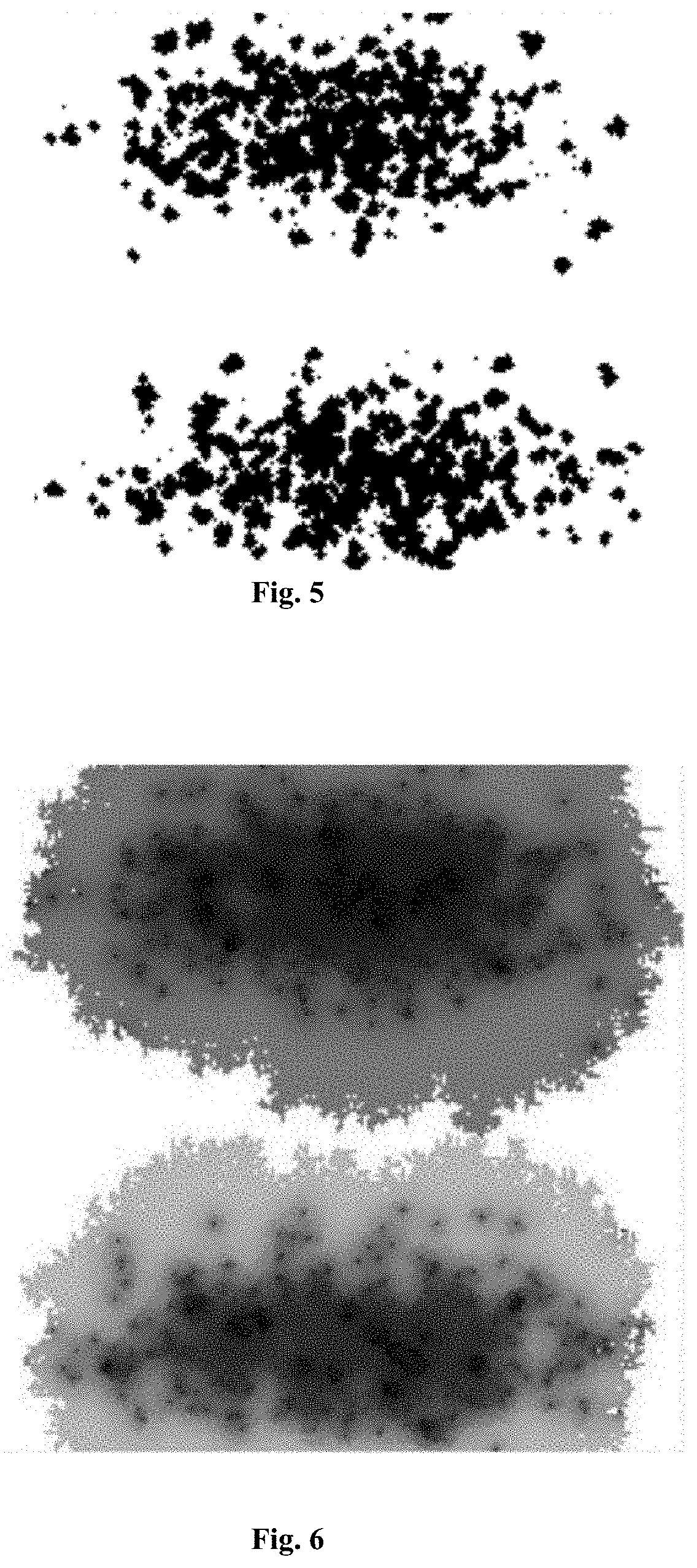Method for solving the problem of clustering using cellular automata based on heat transfer process
a technology of cellular automata and heat transfer process, applied in the direction of concurrent instruction execution, instruments, computing, etc., can solve the problem of algorithm efficiency declin
- Summary
- Abstract
- Description
- Claims
- Application Information
AI Technical Summary
Benefits of technology
Problems solved by technology
Method used
Image
Examples
Embodiment Construction
[0017]The method developed to fulfill the objects of the present invention is illustrated in the following attached figures,
[0018]FIG. 1. is a view of the distribution of a dataset on 2 dimensional cellular automata.
[0019]FIG. 2. is a view of an example cellular automaton and the initial values of cells.
[0020]FIG. 3. is a view of the final configuration of the cellular automaton in FIG. 2.
[0021]FIG. 4. is a view of the distribution of a dataset in a cellular automaton.
[0022]FIG. 5. is a view of the intermediate configuration of the cellular automaton.
[0023]FIG. 6. is a view of the final configuration of the cellular automaton.
[0024]FIG. 7. is a view of the Aggregation dataset.
[0025]FIG. 8. is a view of the Banana dataset.
[0026]FIG. 9. is a view of the Sizes 1 dataset.
[0027]FIG. 10. is a view of the Chainlink dataset.
[0028]FIG. 11. is a view of the Jain dataset.
[0029]FIG. 12. is a view of R15 dataset.
[0030]FIG. 13. is a view of Runtime comparison of the algorithms
[0031]In the most ba...
PUM
 Login to View More
Login to View More Abstract
Description
Claims
Application Information
 Login to View More
Login to View More - R&D
- Intellectual Property
- Life Sciences
- Materials
- Tech Scout
- Unparalleled Data Quality
- Higher Quality Content
- 60% Fewer Hallucinations
Browse by: Latest US Patents, China's latest patents, Technical Efficacy Thesaurus, Application Domain, Technology Topic, Popular Technical Reports.
© 2025 PatSnap. All rights reserved.Legal|Privacy policy|Modern Slavery Act Transparency Statement|Sitemap|About US| Contact US: help@patsnap.com



